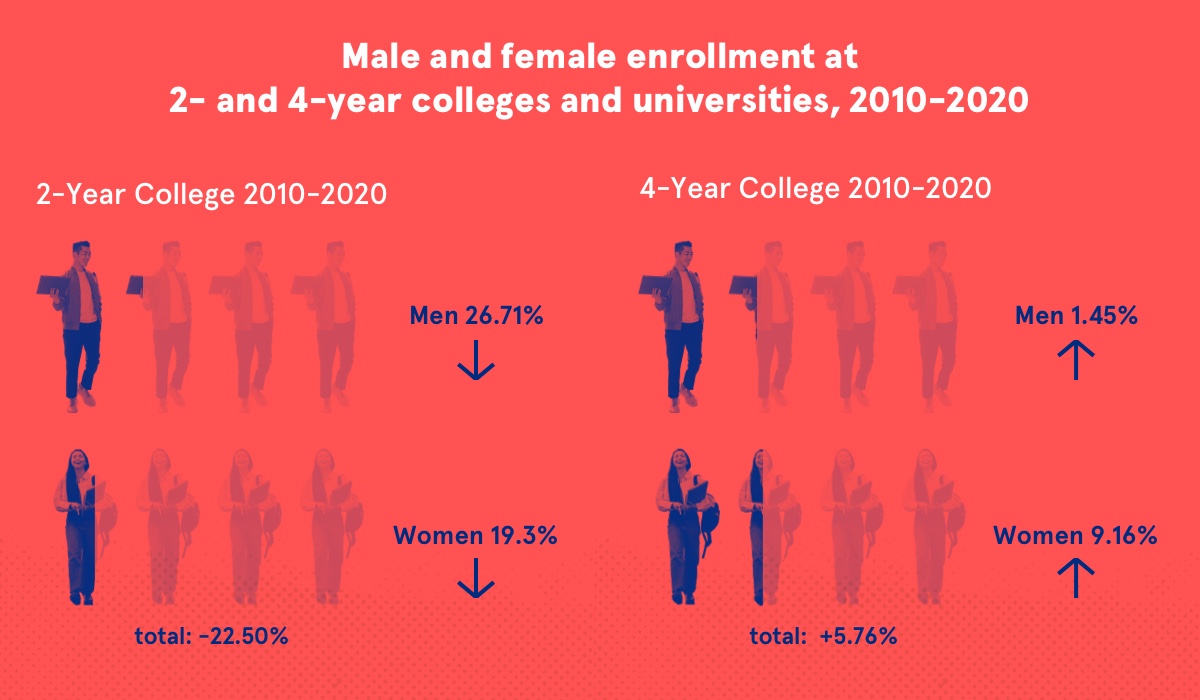Some people say the glass is half-empty. Others say the glass is half-full. I say the glass is twice as big as it needs to be. —George Carlin
You can’t read very much about higher education these days without hearing about the “male enrollment crisis.” It’s made the Wall Street Journal and The New York Times, it’s attracted the attention of think tanks and trade publications and local news outlets. It’s clearly (we’re told) one of the most pressing issues of our time.
But is it? As with many things you read about, the reality is probably a bit more nuanced than you might suspect.
It is funny how things that affect people who are used to being the majority are labeled “a crisis.” For instance, much has been made of the so-called demographic cliff, a drop-off in public high school graduates that will hit the U.S. about 2026. While the farthest out we can see tells us that numbers will return to 2014 levels (not the end of the world), the real concern, perhaps, is that the decrease is greatest among white students.
One would have to wonder if we’d be talking about declining male college enrollment if it were the opposite: If enrollment of young men was surging, and young women were attending college in smaller proportions, would everyone be so worried? I doubt it.
No one is telling men they can’t or shouldn’t go to college, or that their career options are limited because of their gender.
So what is all the hand wringing about? According to data from the Integrated Postsecondary Education Data System (IPEDS), in 2010 men made up about 43.8% of all post-secondary enrollment (both two- and four-year institutions) in the U.S. By 2020, that number had fallen to about 41.9%. You might think, then, that the average person walking on an average university campus would be unlikely to notice any difference at all.
READ MORE: The ‘Nearly Impossible’ Job of College President
But when you dig below the surface, what the data tells us is that if there is indeed a crisis in male enrollment, it is not at four-year institutions — it is a community college enrollment crisis.
Total college enrollment at two- and four-year institutions dropped by over 760,000 between 2010 and 2020 (from 17.2 million to 16.45 million), a 4.4% decrease; meanwhile enrollment at four-year institutions actually rose over 630,000, and male enrollment at four-year institutions actually rose by 70,000, an increase of almost 1.5 percent.
Enrollment at community colleges is almost counter-cyclical with the economy, and we know the economy has been red-hot in recent years.
So the decline, then, happened at two-year institutions, and that is where men saw a huge drop: in 2010 there were nearly 2.68 million men enrolled in community colleges; by 2020, that number was 1.9 million, a drop of nearly 27 percent. Female enrollment declined during that same period from 3.53 million to 2.84 million, a 19 percent decline that is certainly worth worrying about in addition to the “male enrollment crisis.”








